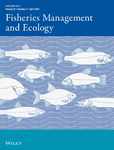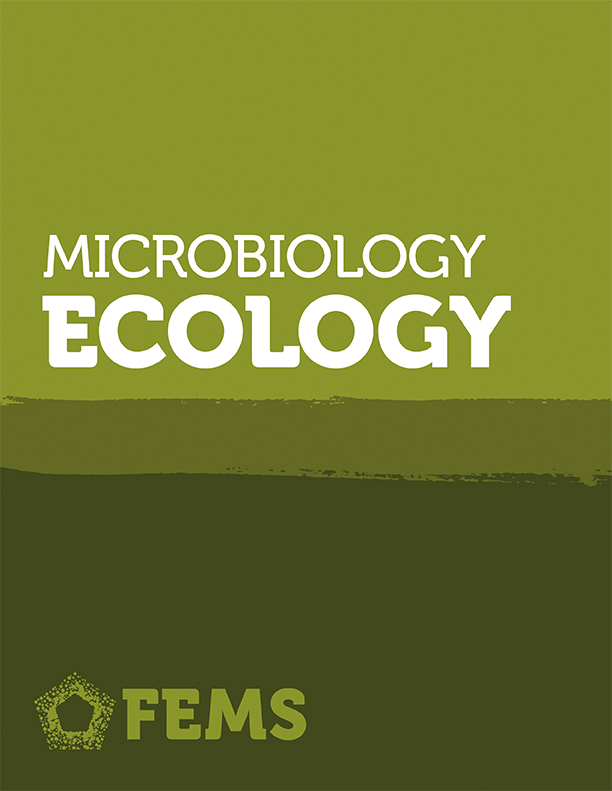Please find all scientific publications of IGB under > scientific publications
For more detailed information please refer to our > library catalogue
101 - 110 of 748 items
May 2025
Journal of Zoology. - 326(2025)4, 320-328
Annual variation in riverscape habitat use by a diadromous fish before oceanic migration
R. Futamura; K. Morita; Y. Kanno; A. Terui; A. Okuda; O. Kishida
May 2025
Freshwater Biology. - 70(2025)5, Art. fwb.70023
Using Long-Term Ecological Datasets to Unravel the Impacts of Short-Term Meteorological Disturbances on Phytoplankton Communities
Viet Tran-Khac; Jonathan P. Doubek; Vijay Patil; Jason D. Stockwell; Rita Adrian; Chun-Wei Chang; Gaël Dur; Aleksandra Lewandowska; James A. Rusak; Nico Salmaso; Dietmar Straile; Stephen J. Thackeray; Patrick Venail; Ruchi Bhattacharya; Jennifer Brentrup; Rosalie Bruel; Heidrun Feuchtmayr; Mark O. Gessner; Hans-Peter Grossart; Bastiaan W. Ibelings; Stéphan Jacquet; Sally MacIntyre; Shin-Ichiro S. Matsuzaki; Emily Nodine; Peeter Nõges; Lars Rudstam; Frédéric Soulignac; Piet Verburg; Petr Znachor; Tamar Zohary; Orlane Anneville
May 2025
Biological Conservation. - 308(2025), Art. 111199
A unifying theoretical framework for conservation flagships
Ivan Jarić; Sarah L. Crowley; Jonathan M. Jeschke; Ugo Arbieu; Gabriel Henrique de Oliveira Caetano; Ricardo A. Correia; Arjun Kamdar; Richard J. Ladle; Stefano Mammola; Uri Roll; Diogo Veríssimo
May 2025
Water Research. - 283(2025), Art. 123764
Phytoplankton abundance and methane emissions are minimally impacted by environmentally-relevant glyphosate concentrations in small-scale outdoor mesocosms
Christopher F. Frazier; Ted D. Harris; Tonya DelSontro; Hans-Peter Grossart; Belinda S.M. Sturm; Jalynn M. Murry; Andrew Ising

May 2025
Ecotoxicology and Environmental Safety. - 297(2025), Art. 118262
Community assembly characteristics of abundant and rare bacterial taxa in water, sediment and riparian soil of Wujiang river, China
Yang Yang; Chen Chen; Hans-Peter Grossart; Yingliang Liu
May 2025
Water Resources Research. - 61(2025)5, Art. e2024WR039042
One-Hundred Fundamental, Open Questions to Integrate Methodological Approaches in Lake Ice Research
Joshua Culpepper; Sapna Sharma; Grant Gunn; Madeline R. Magee; Michael F. Meyer; Eric J. Anderson; Chris Arp; Sarah W. Cooley; Wayana Dolan; Hilary A. Dugan; Claude R. Duguay; Benjamin M. Jones; Georgiy Kirillin; Robert Ladwig; Matti Leppäranta; Di Long; John J. Magnuson; Tamlin Pavelsky; Sebastiano Piccolroaz; Dale M. Robertson; Bethel G. Steele; Manu Tom; Gesa A. Weyhenmeyer; R. Iestyn Woolway; Marguerite A. Xenopoulos; Xiao Yang
May 2025
FEMS Microbiology Ecology. - 101(2025)6, Art. fiaf050
Detectable land use impact on methanotrophs and methanogens in kettle hole sediments but not on net methane production potentials
Danica Kynast; Florian Reverey; Lars Ganzert; Hans-Peter Grossart; Gunnar Lischeid; Steffen Kolb

April 2025
Water. - 17(2025)9, Art. 1352
Testing Macrophyte-Based Assessment Tools Developed Under the EU Water Framework Directive for Application in a Caucasus Region Country (Armenia)
Hermine Yepremyan; Vardan Asatryan; Marine Dallakyan; Gayane Shahnazaryan; Martin Pusch

April 2025
Journal of Advances in Modeling Earth Systems. - 17(2025)5, Art. e2024MS004593
A Model for Regional-Scale Water Erosion and Sediment Transport and Its Application to the Yellow River Basin
Cong Jiang; Eric J. R. Parteli; Yaping Shao

April 2025
Fisheries Management and Ecology. - 32(2025)4, 2-10
Three Decades of World Recreational Fishing Conferences: What Have We Learned About the Dynamics of Recreational Fisheries?
Valerio Sbragaglia; Robert Arlinghaus; Faith Ochwada-Doyle; Holly S. Embke; Lucas P. Griffin; Taylor L. Hunt






